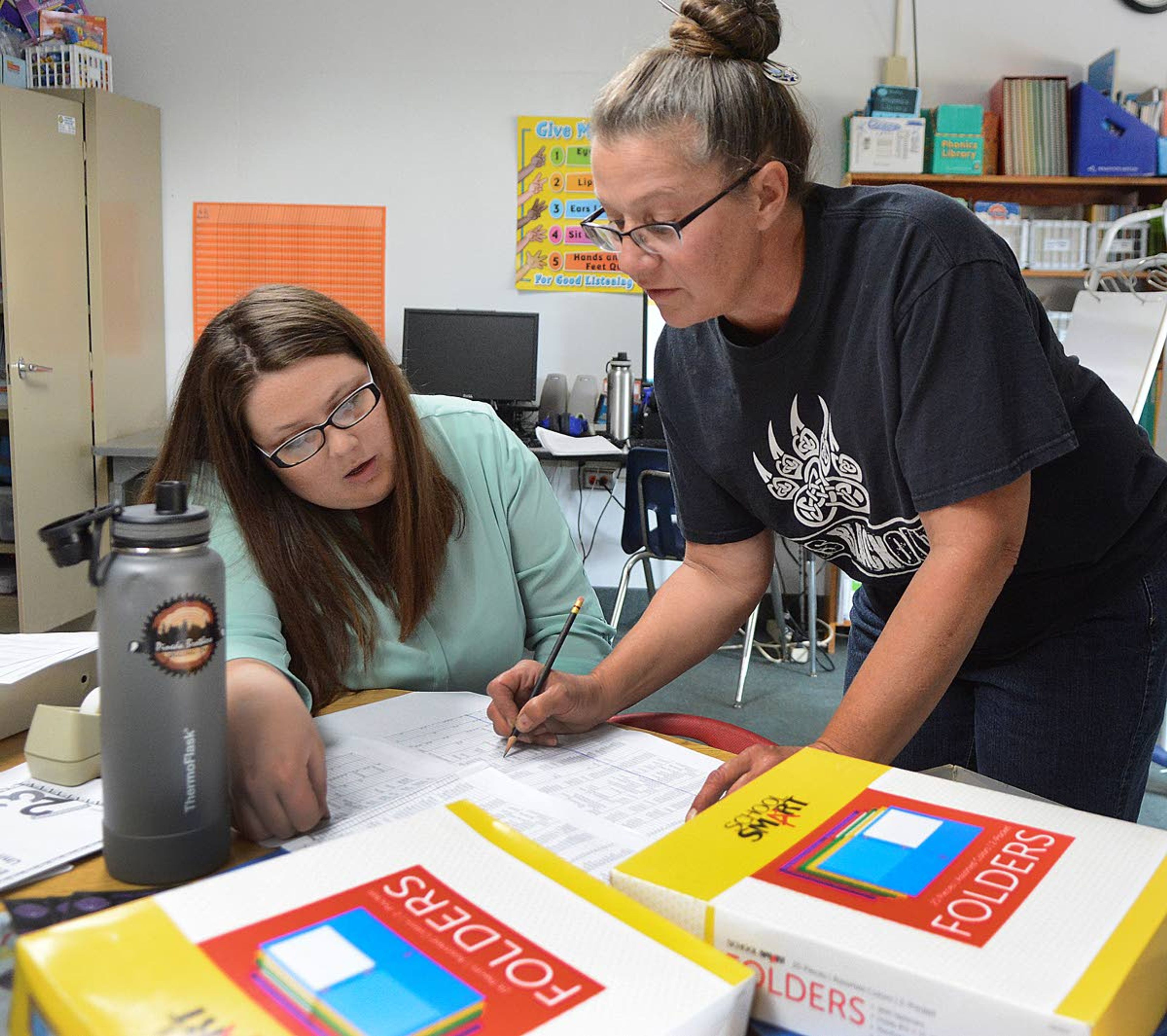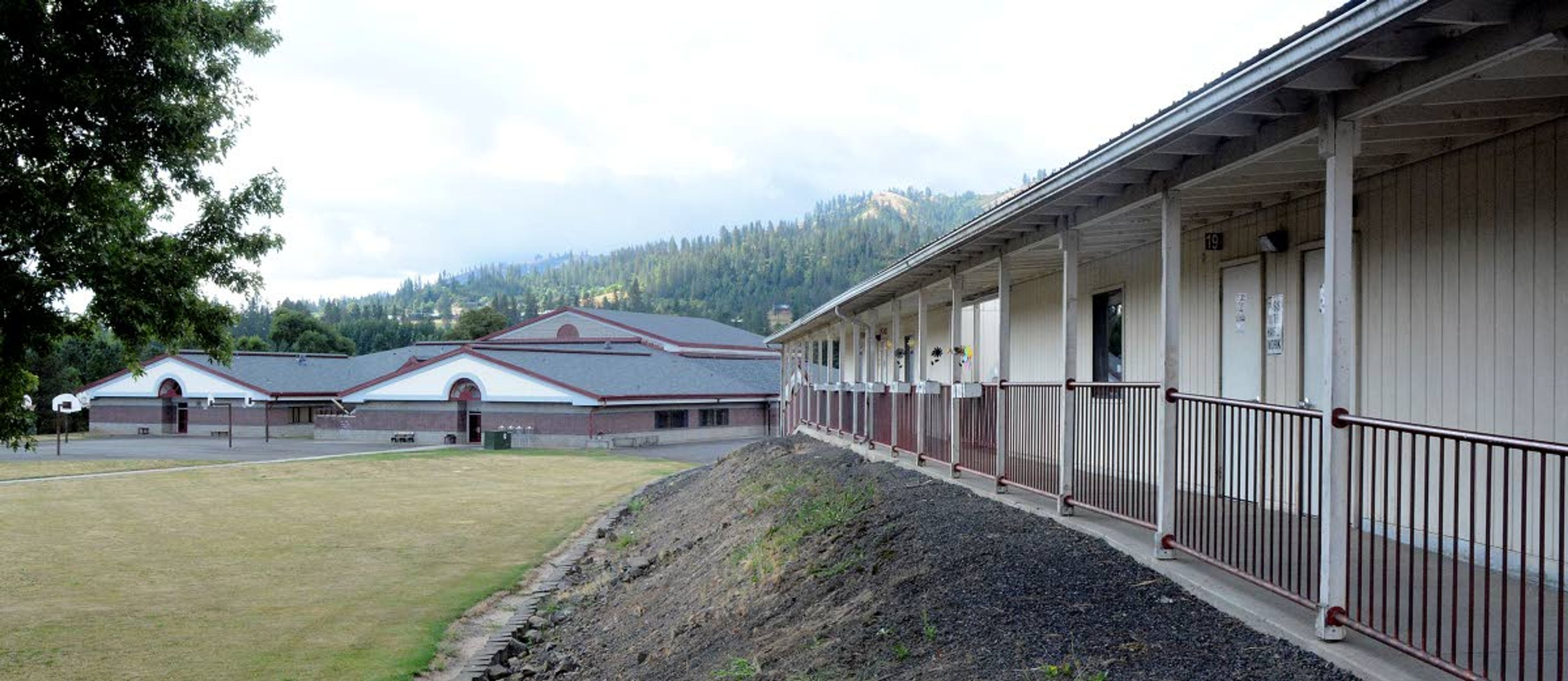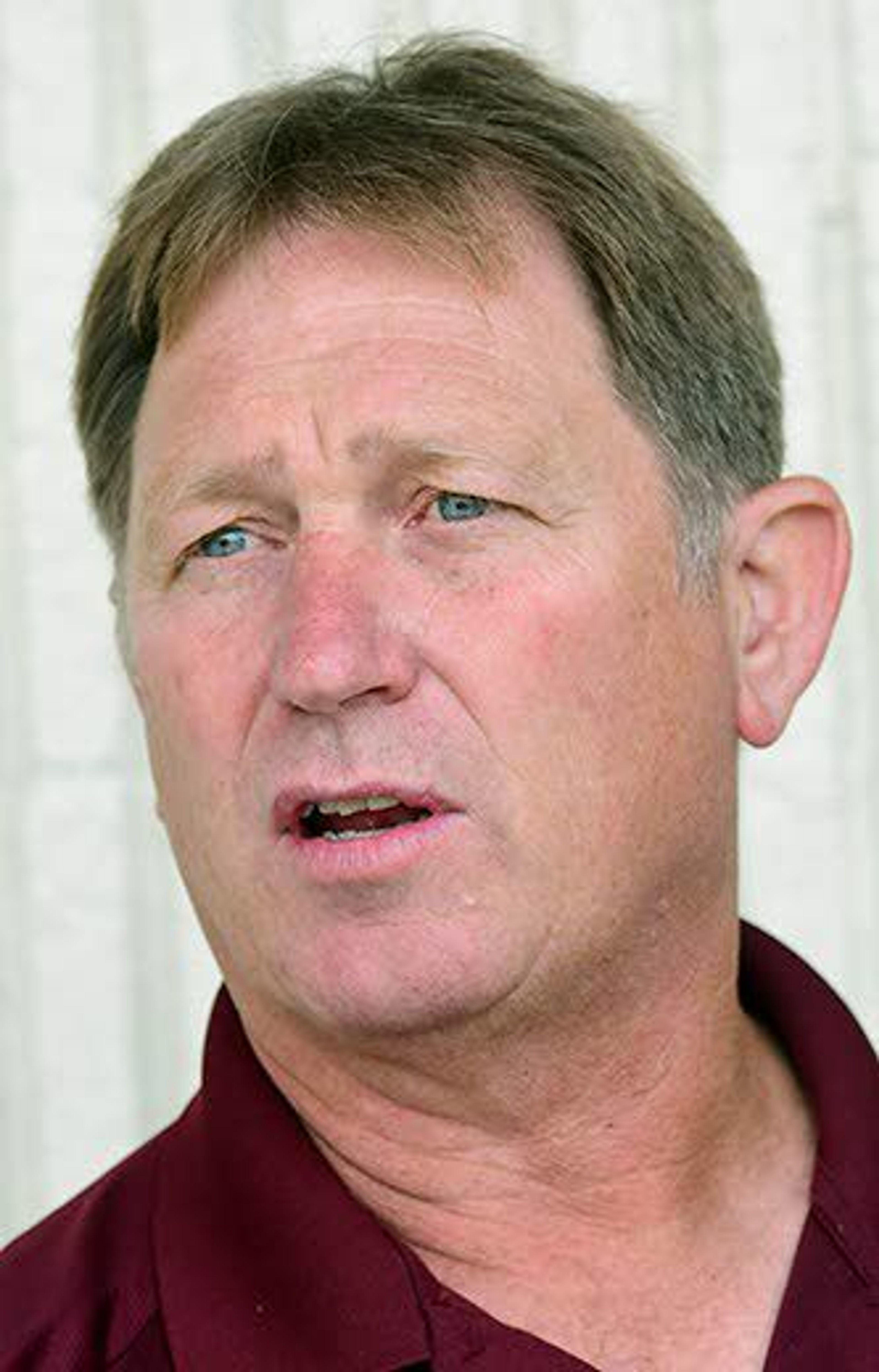Teaching with one building down
Kamiah reconfigures school district after shuttering its middle school after levy fails
KAMIAH — Students return to class today, but the Kamiah School District’s fourth- through eighth-grade middle school remains empty.
The school district closed the building for this school year after a $500,000 levy measure failed in March.
Fourth- through sixth-graders have been moved into the elementary school, with kindergarten through third grade, while seventh through eighth grades moved into the high school.
Kamiah Superintendent Steve Higgins said the school district was redesigned to best meet the needs of its students.
“A building is not what’s going to educate the kids,” Higgins said. “It’s the teachers, it’s those relationships, it’s those programs. Granted the building provides you that sense of pride, but with pride comes a little cost, too.”
The decision to close the middle school is estimated to save the district around $106,000. School districts are obligated to spend a certain dollar amount per square foot on maintenance of student-occupied buildings, and closing the newest school in the district saved the most money.
To keep the seventh- and eighth-graders separate from the older students, high school Principal Peggy Flerchinger adjusted bell schedules so the two age groups don’t fill the hallways at the same time. Ninth- through twelfth-graders will mostly be located on the upper level of the high school.
Two modular buildings next to the elementary school that previously housed after-school programs have been redesigned into fifth- and sixth-grade classrooms. And a few classrooms located in the district’s shop building are now being used to teach math and house a computer lab for the business program.
“We have a full house now,” Higgins said, adding there are no empty classrooms in the elementary or high school buildings. “We are almost at this point in time where we are too small for three buildings, but too big for two buildings.”
Despite some apprehension at first, Flerchinger said the changes have brought unexpected benefits.
“It’s allowed me to have more electives for our kids,” she said.
Before the change, the district had some teachers at the middle school who could teach high school classes, but logistically weren’t able to because they were housed in separate buildings.
Now, there will be about half a dozen new electives offered to middle and high schoolers, including Native American history and an interdisciplinary humanities class, which will focus on the history of rock ‘n’ roll.
Brooke Martin, a fourth-grade teacher, taught at the elementary school before her classroom was moved to the middle school to make room for kindergarten. After spending three years at the middle school, she is now back in her old classroom in the elementary school.
“It is what it is,” Martin said. “We’ve done it before, and we’re just going to make the best of it. I’m just in a different room, so it’s not going to change anything.”
Martin said the move allows her to increase her collaboration with the third-grade teachers so she’s better prepared for her incoming students.
The district had planned to reduce its all-day kindergarten to a half-day program if the levy failed, but the school board ultimately decided against it. The program will be supplemented with state funds under Idaho’s literacy program, which distributes money to school districts based on how many at-risk readers they teach.
After undertaking other cost-saving measures, like a reduction of four coaches and extracurricular staff, the district will still need to realize around $116,000 in savings before the end of the school year.
“I think we can do it,” Higgins said.
That will be made easier if there are no major maintenance issues during the year. A warmer winter would also help keep utility costs down, he said.
Higgins isn’t quite sure what will happen if the school district can’t hit that number.
“I don’t have an answer for that,” he said. “We’d have to make some changes.”
The school board has considered running another levy, but the decision has not been finalized. Even if a levy were approved, it wouldn’t affect the 2019-20 school year.
“If the board chooses to run the levy, and if the levy does pass, we wouldn’t see that revenue for a whole calendar year,” Higgins said.
Higgins believes the community still supports the schools, despite the levy failure.
In March 2018, when Kamiah passed its first levy since 2013, more voters showed up to the polls. The levy passed with 626 votes, out of 1,087. This time around, there were 833 votes in all, with only 384 in favor. But Higgins pointed out there were fewer no votes this time around. In March 2018, 461 opposed the levy that ultimately passed, while this March, 449 people voted against it.
“There’s a real community effort out there at this time to say we do support education, and we do support the schools,” Higgins said.
The middle school and its gymnasium, which also served as a community center of sorts, will no longer be utilized by the public for events. The district’s various teams will now play in the older gym in the high school.
Higgins said his top priority is to get the middle school building reopened.
“My goal is to get that building reopened in any form or fashion — with or without a levy,” Higgins said. “That’s my biggest job this year.”
Tomtas may be reached at jtomtas@lmtribune.com or (208) 848-2294. Follow her on Twitter @jtomtas.












